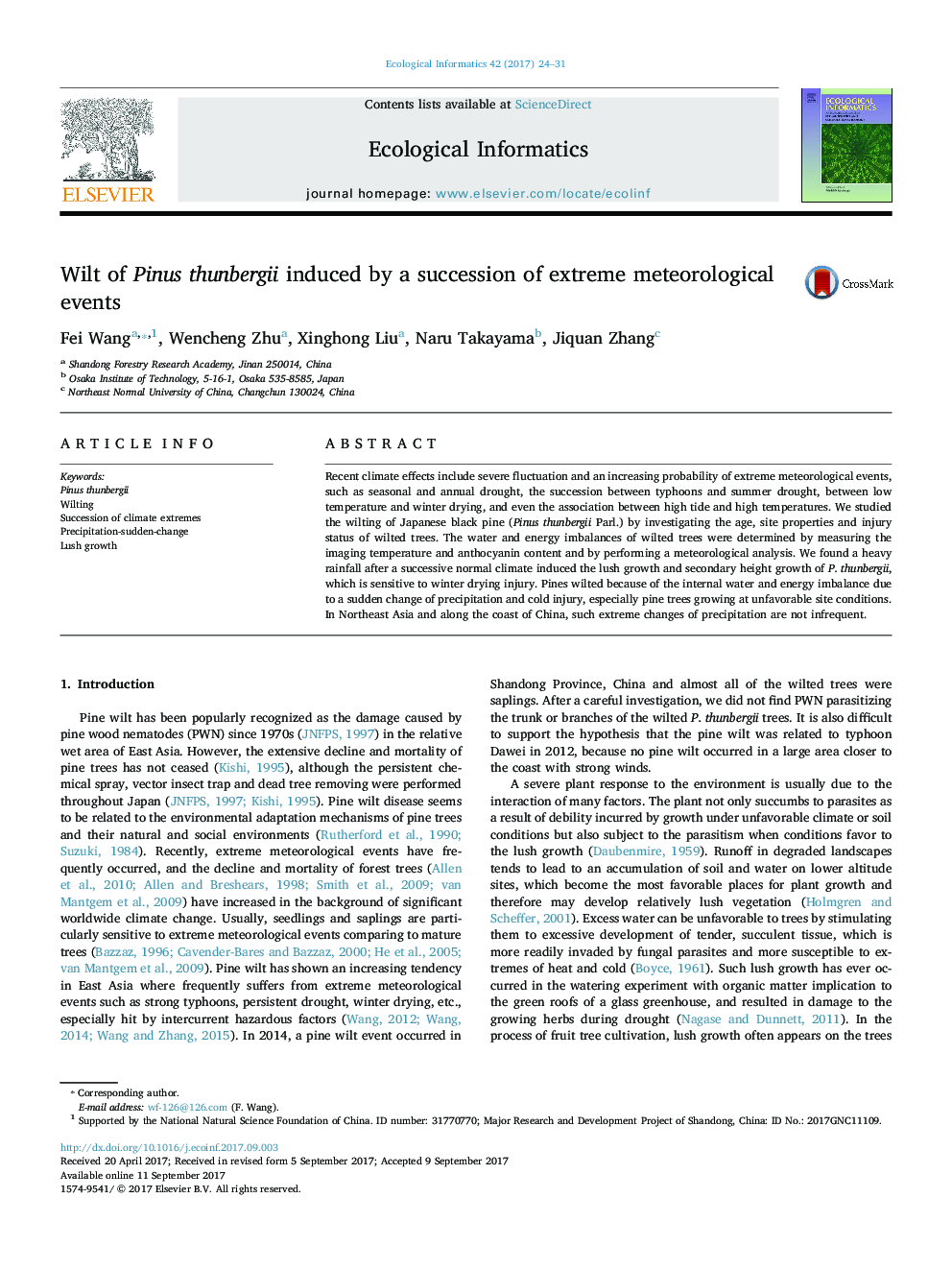| Article ID | Journal | Published Year | Pages | File Type |
|---|---|---|---|---|
| 5741882 | Ecological Informatics | 2017 | 8 Pages |
â¢We analyze the wilt events of Pinus thunbergii occurred in Laiwu City, China.â¢It is induced by the sudden return from extremely heavy rain to persistent no rain.â¢Excessive rainfall induced their overgrowth and repetitious secondary growths.â¢Pine wilted for the reason of hardly resistance to the water and energy imbalance.â¢This kind of meteorological extreme event is not infrequency in East Asia area.
Recent climate effects include severe fluctuation and an increasing probability of extreme meteorological events, such as seasonal and annual drought, the succession between typhoons and summer drought, between low temperature and winter drying, and even the association between high tide and high temperatures. We studied the wilting of Japanese black pine (Pinus thunbergii Parl.) by investigating the age, site properties and injury status of wilted trees. The water and energy imbalances of wilted trees were determined by measuring the imaging temperature and anthocyanin content and by performing a meteorological analysis. We found a heavy rainfall after a successive normal climate induced the lush growth and secondary height growth of P. thunbergii, which is sensitive to winter drying injury. Pines wilted because of the internal water and energy imbalance due to a sudden change of precipitation and cold injury, especially pine trees growing at unfavorable site conditions. In Northeast Asia and along the coast of China, such extreme changes of precipitation are not infrequent.
